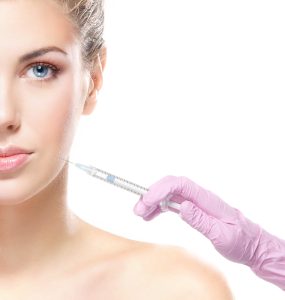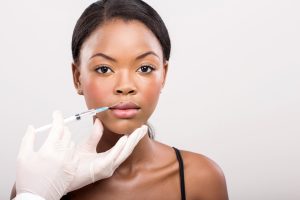The world of cosmetic injectables is an ever changing place and can be a daunting one to enter, especially for the very first time.
To simplify the industry slightly, we are going to take a look at the two most popular injectable treatments used by people across the world to achieve their dream appearance and tackle the unwanted signs of aging.
Both Botox and Dermal fillers are incredibly effective treatments in their own right and whilst they are often confused, are actually very different. As you might imagine, fillers fill in any areas of your face that have lost volume over the years, helping to smooth skin and allowing you to achieve a younger looking wrinkle free complexion.
Botox, on the other hand, immobilises the muscles that are responsible for the formation of wrinkles in the first place, making it the better choice for those looking to take preventative action to help slow the aging process.
As you can see, these are two pretty different treatments, but, as injectables designed to reduce and reverse signs of aging, are understandably interlinked and often mentioned together.
To help you make the most well-informed decision possible about which of the two treatments are best for you, we have put together a list of the differences between fillers and Botox. Read on to discover more about whether a filler or Botox Glasgow City Centre treatment is the best option for your needs.
What is Botox?

Botox is a neuromodulator that paralyses the muscles it is injected into, helping to relax the area and reducing the appearance of fine lines and wrinkles. Whilst Botox injection can be used to smooth out existing fine lines and minor wrinkles, its main use is to prevent their appearance in the first place by preventing the movement responsible for deep wrinkle formation.
As well as a variety of cosmetic uses, Botox is also used extensively for medical purposes and is one of the most adaptable and customisable injectable on the market today. Just a few of the ways that Botox is used that you might not expect include to prevent excessive sweating by sealing sweat glands, providing relief from arthritis pains, and reducing the severity and frequency of migraines.
The term Botox is actually a brand name for a version of the botulinum neurotoxin that is now commonly used to describe all treatments using the substance. It may be that when you arrange an appointment at a cosmetic clinic to discuss your treatment that your doctor ends up recommending a different brand, but rest assured they will be just as effective and are all fully approved for safe use by the FDA.
When you go for a Botox treatment you will initially take part in a consultation with a doctor to discuss your goals and medical history. Once you and your doctor are happy that Botox is something that is suitable for your needs a series of small injections will be made into the target area. Numbing cream may be used to reduce discomfort but no general anaesthetic will be used. The full effects of Botox will usually be fully visible after around a week.
There are very few side effects associated with Botox, and risks are usually limited to minor bruising and soreness that will ease after just a couple of days.
What are fillers?

Dermal fillers are another popular injectable used to reduce signs of aging. Rather than paralysing facial muscles, fillers do this by adding volume under the skin to smooth out the surface and stimulating the production of elastin and collagen.
Fillers are far superior to Botox when it comes to dealing with static wrinkles; those pesky lines that are visible when the face is at rest.
Dermal fillers made up of hyaluronic acid, do share one similarity with Botox in that the risk of any side effects is very low. This is mainly due to the fact that hyaluronic acid is a naturally occurring substance in the human body, so the risk of an allergic reaction is slim.
These fillers can also be dissolved by your doctor if required using an enzyme known as Hyaluronidase meaning that if something does happen to go awry, or you decide that you detest your new look and want to go back to your original appearance you can.
The temporary nature of dermal filler can be frustrating if you, like the vast majority of other are delighted with the way they enhance your appearance, but is also reassuring, especially for those who are visiting a cosmetic clinic for the first time. After around 9-12 months the effects of dermal fillers will naturally fade and the filler breaks down and you will be able to decide if you wish to return for a top-up.